Endangered Beauty
Inle Lake was too beautiful to sit around writing, and I stopped to do only a couple of sketches while there. (I am going to have a lot of painting to do when I get home.) That’s why I’m writing this now, sitting in a hotel in Rangoon, with a feeling that I lost something. I fell in love with achingly beautiful Inle Lake, and I know that even if I went back there a year from now, it will have lost much of its charm to the influx of tourism, and the need to cater to their demand for a sanitized experience. The early signs are there.
Tuesday, November 29. We fly into Heho airport. It’s small. Everything is manual, but it’s a cattle yard.
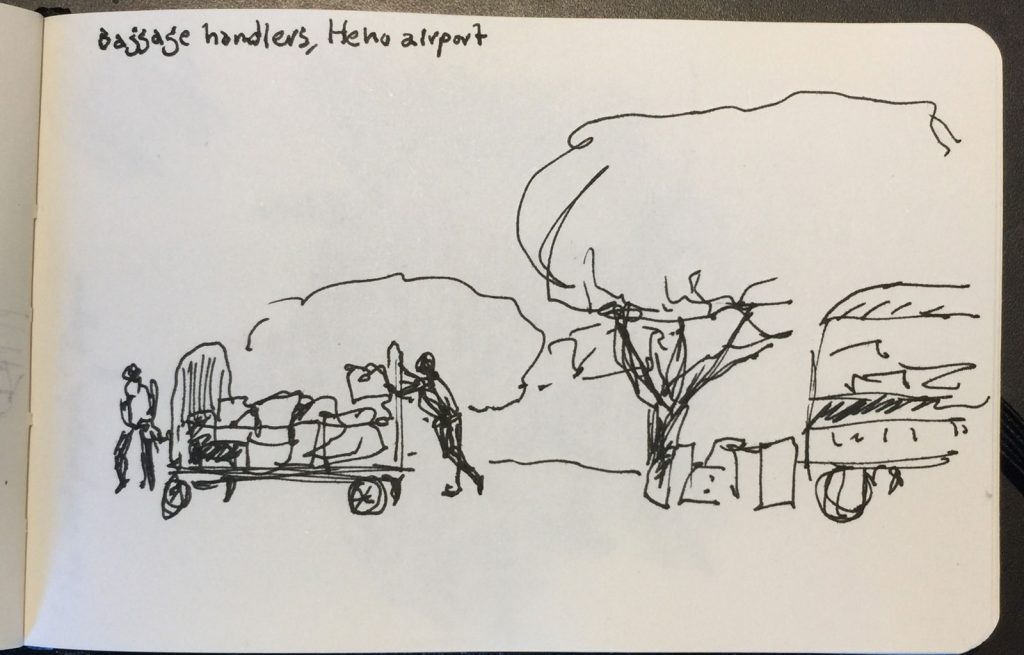
We’re met by a young woman, not our guide, but a specially authorized rep, a holdover from this having been a military airport. Outside, in the dirt parking lot, we meet our guide, Mar Lar (pronounced ‘Ma-la’), and our driver, who gives us a red-tinted smile. On our way to the lake, where we will pick up a boat to take us to the hotel, we are going to stop at a monastery whose oval windows are mentioned in the guidebooks (oh boy) and a shop that makes paper and paper umbrellas. Well, it’s the first time I’ve seen paper made of mulberry bark, though it’s quite rough and gray, and the old wooden monastery building is picturesque.
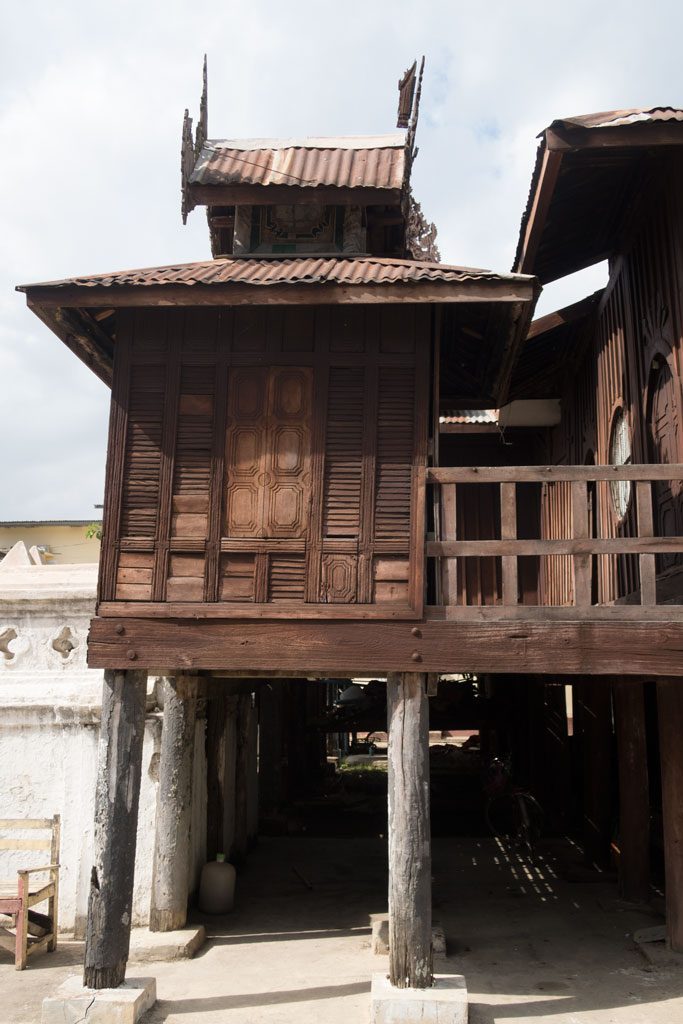
When we arrive at the dock in Nyaung Shwe I forget my camera in the car. Embarrassing. But MarLar is able to call the driver on her mobile, and he doubles back with it, earning a tip.
The boat is a long-tail, with a small diesel put-put engine. We sit on wooden chairs that fit into the deck. The gunwales have a sort of railing about six inches down. I use it to hold on, boatmen stand on it when they paddle in their unique way.

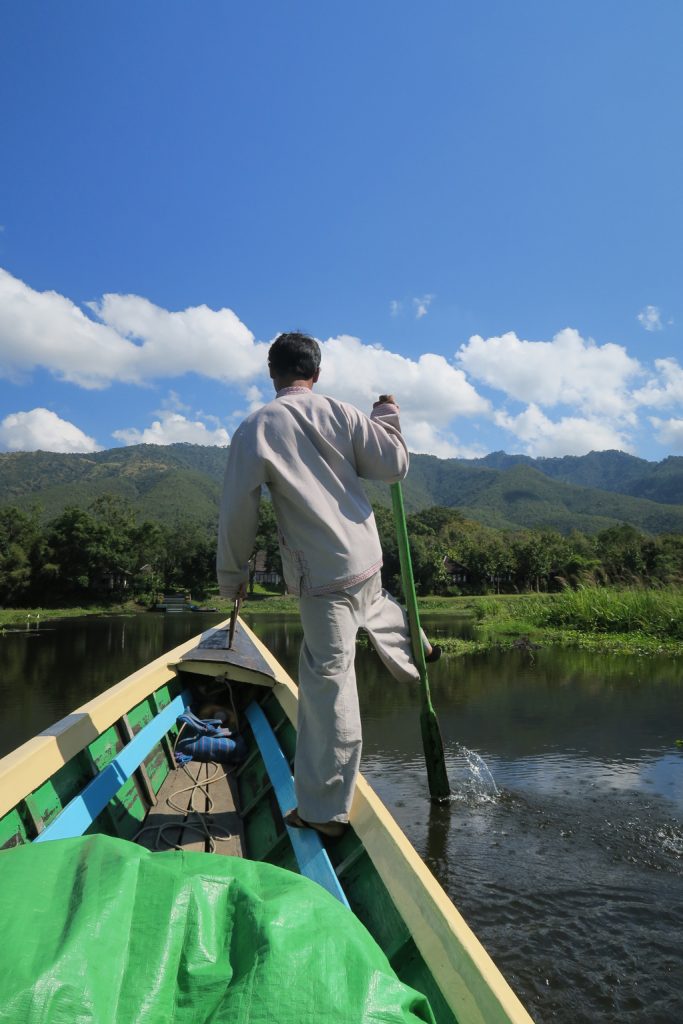
The lake is just beautiful, sometimes quite mirror-like.
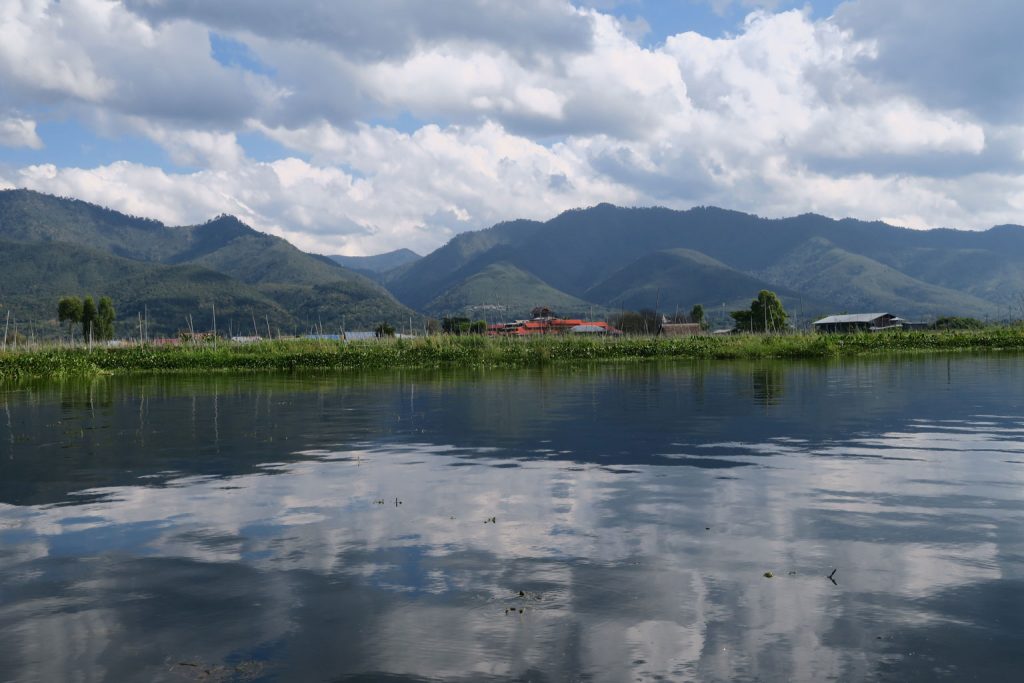
It is shallow and quite fertile in terms of plant life, which can be found not only under water, but floating in sometimes quite large floating islands; and fish and shellfish. Fishing is carried on in traditional ways, with familiar nets and some unique basket snares.
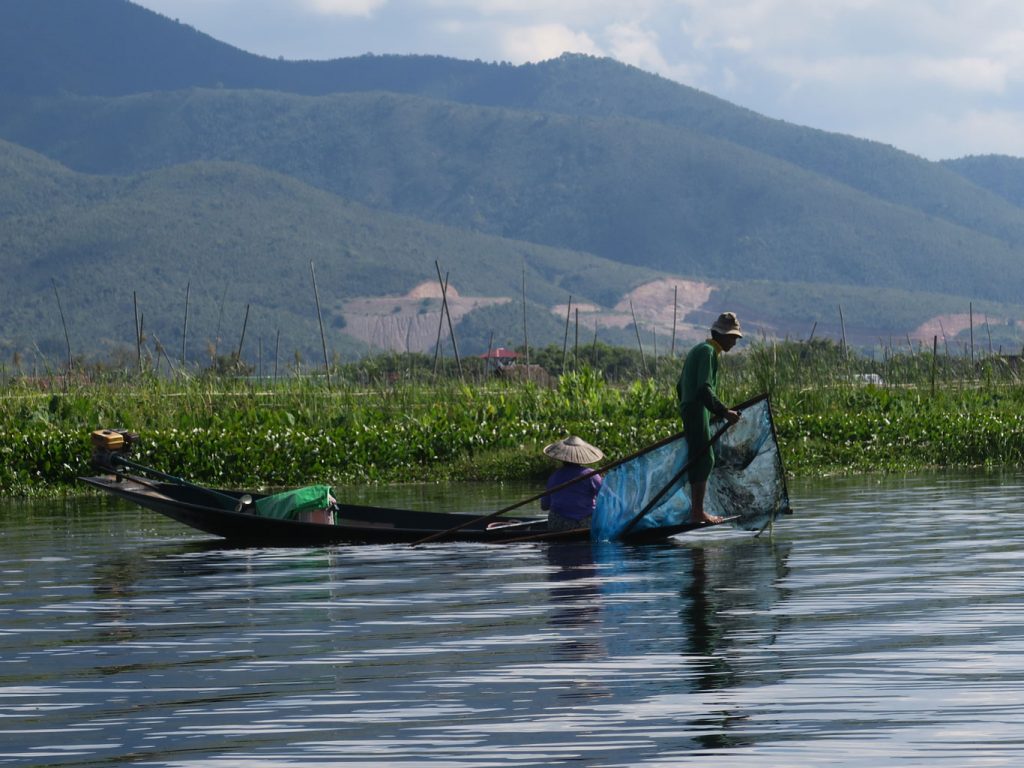
In the afternoon we walked through a small cluster of farmers’ homes, through a bamboo forest next to the fields.

Some of the bamboo was flowering, something I’d never seen.

Women were weeding one of the vegetable patches.
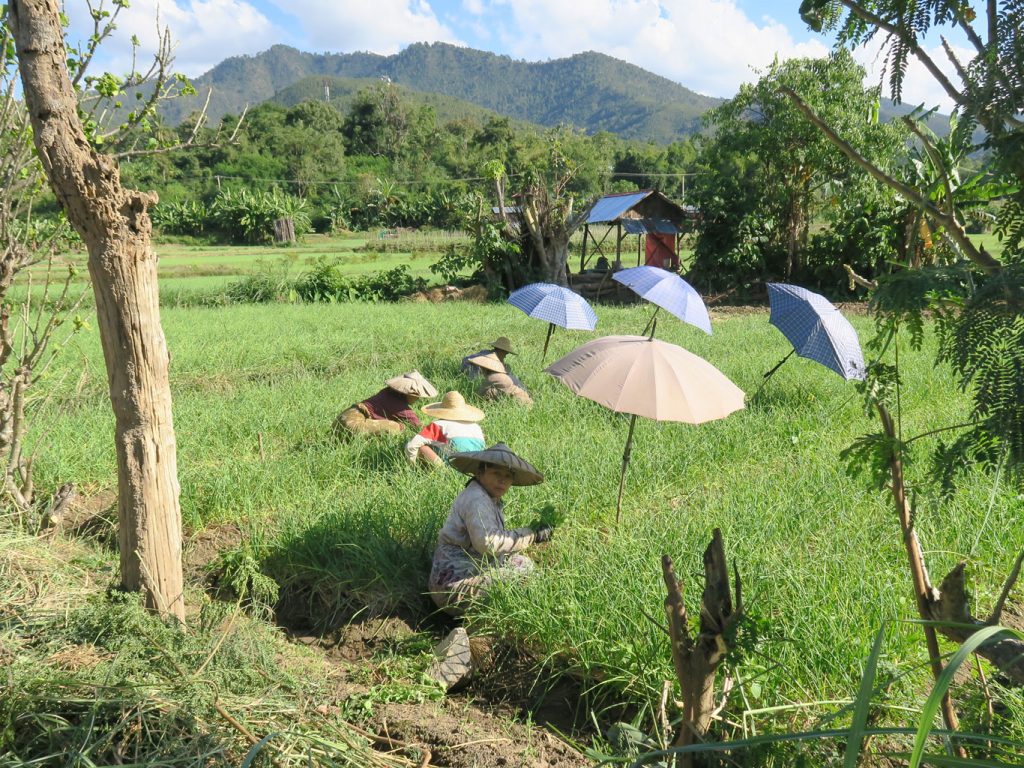
The soil looked very fertile, and the fields along the shore were extensive.

Farmers also gather floating islands, cutting them into 2 by 10 meter sections, moving them to their farmstead, and anchoring them with bamboo poles. Here is a work shed, next to a planting of cucumbers. Their biggest crop, though, is tomatoes grown this way.
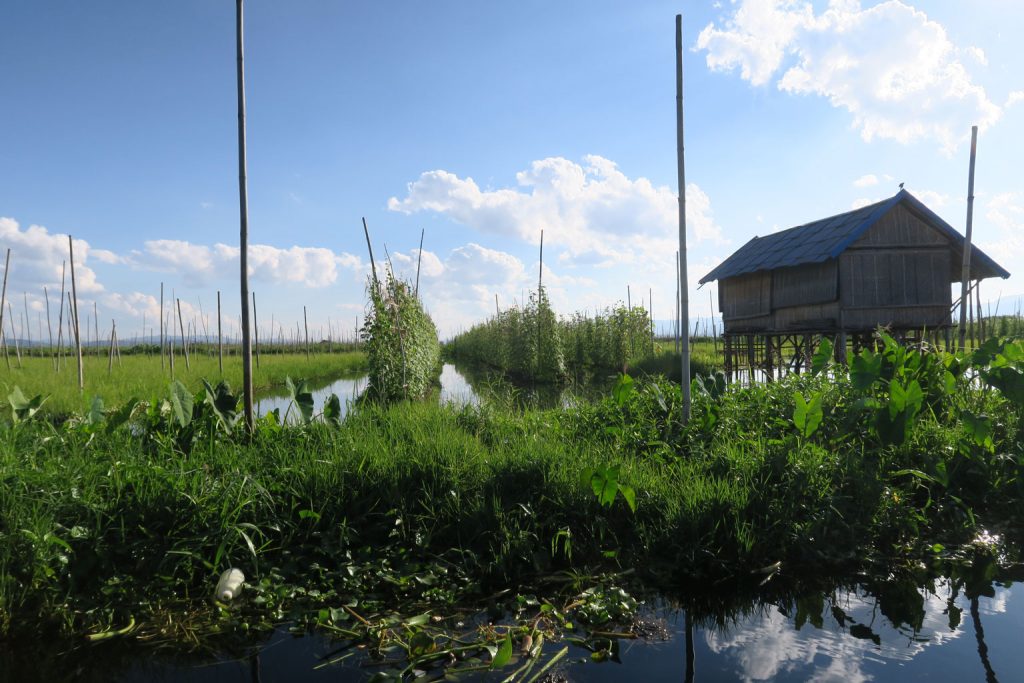
Some of these farmers also live right on the lake.
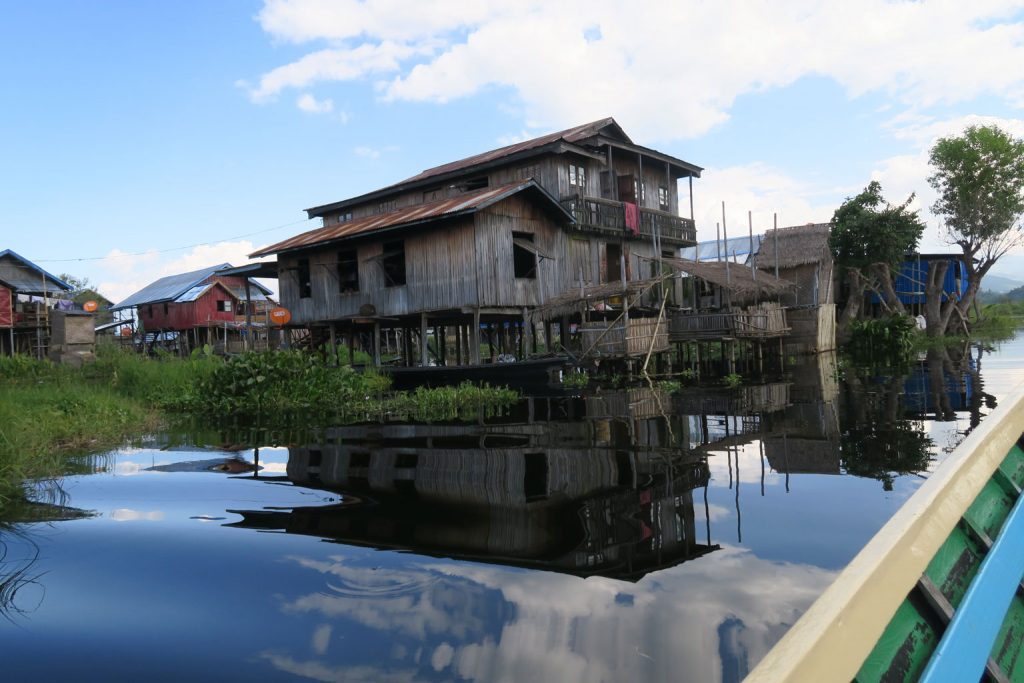
We also visit a market where some people from MarLar’s village, which is up in the hills, come to sell their produce. They are distinguished by their headdress (a small beach towel!) and their black costumes.
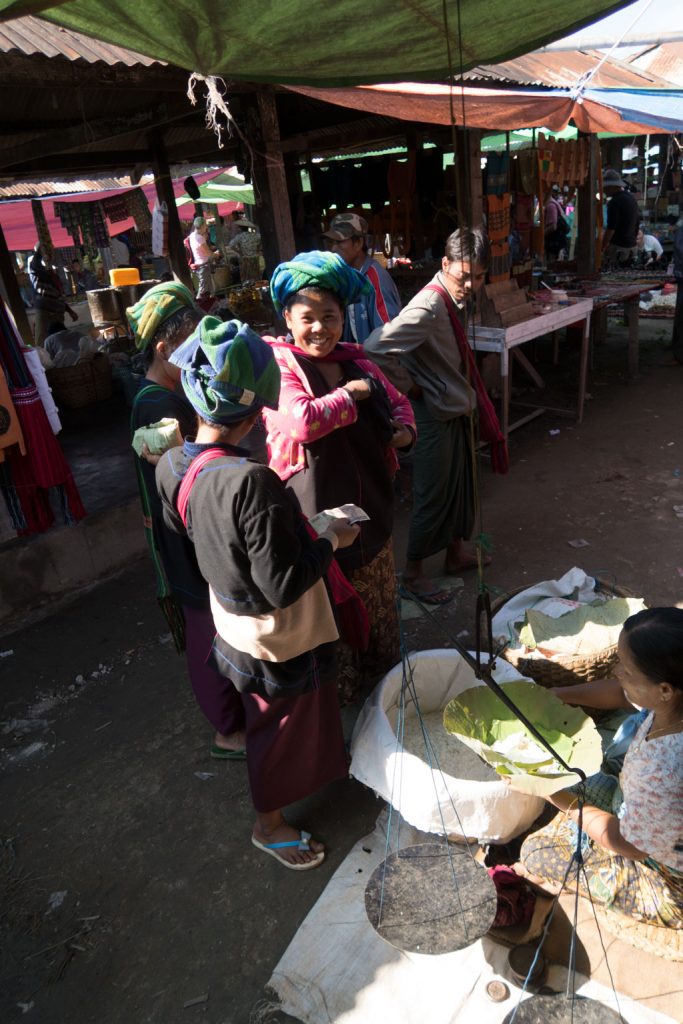
This woman is selling the spice turmeric, a black powder which is used as soap, and sticks whose sap is used for shampoo, and some other produce.
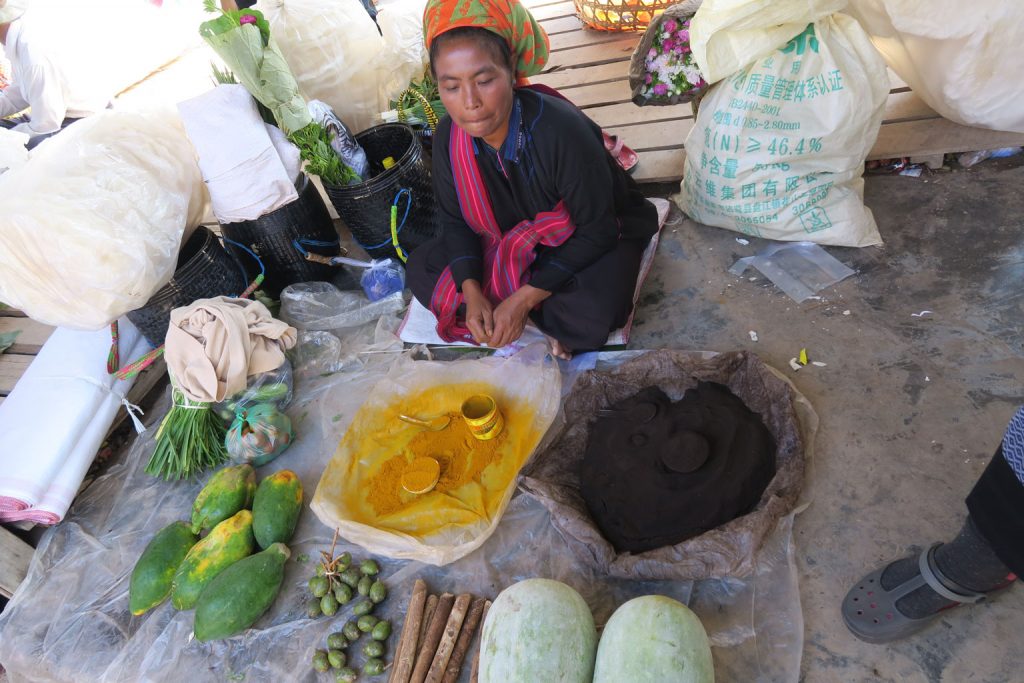
Betel chewers are also served at this village. It is a common addiction, particularly among men. The betel sellers dose the leaves with ground limestone, then chili and other flavors.

The villa we were staying in is beautiful, and is located near a floating farm. Here is the view at sunrise.
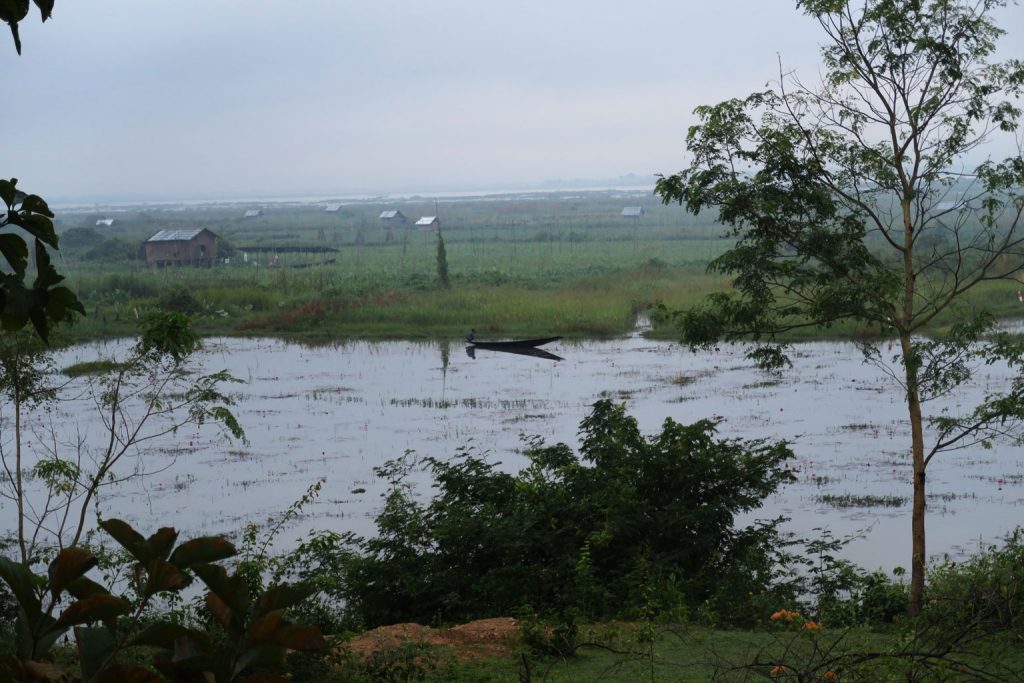
Wednesday, November 30th. We are picked up by MarLar and the boatman, and go touring. One stop is in a village selling various hand-woven articles, and is run by women wearing the traditional neck-stretching necklaces. We are told that they actually encourage photos, as a way of promoting their village and keeping this tradition alive.
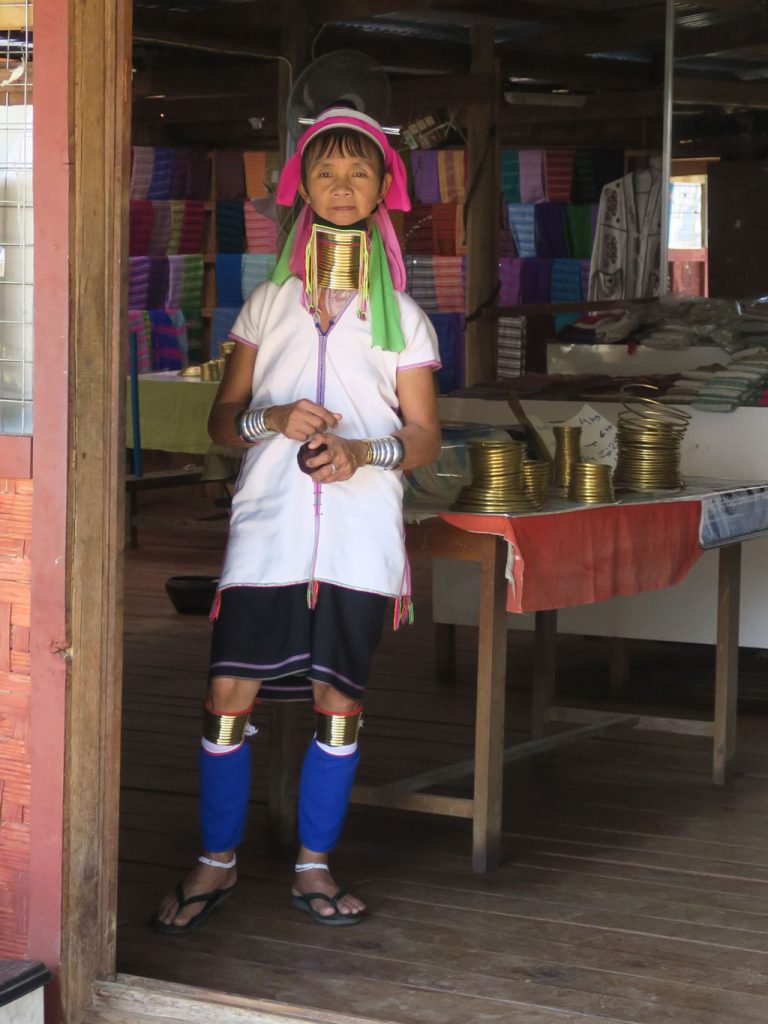
Among the other touristy sights we are taken to is the village of Indein, a site of little-known pagoda ruins.
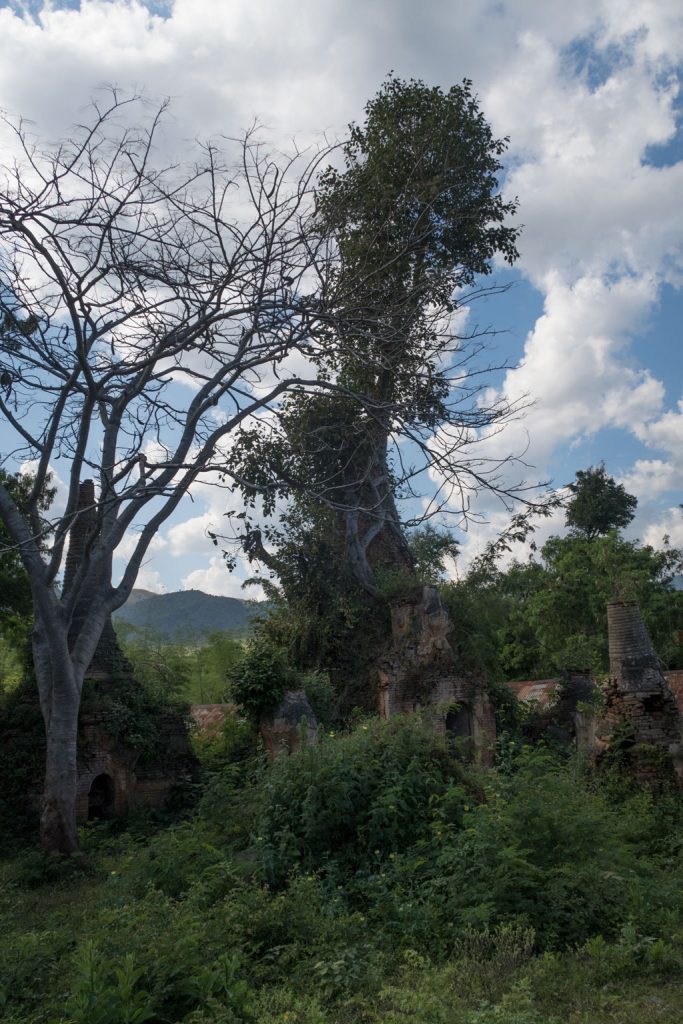
Yes, there’s a pagoda underneath that big tree, and while you can’t see it in this picture, the tree grew right up through the metal ‘umbrella’ that capped the pagoda and carried it up a couple of feet!
Cooking!
Our last full day at Inle Lake we take a cooking lesson that involves multiple courses, and because the restaurant’s classroom is being renovated, takes place right in their kitchen!
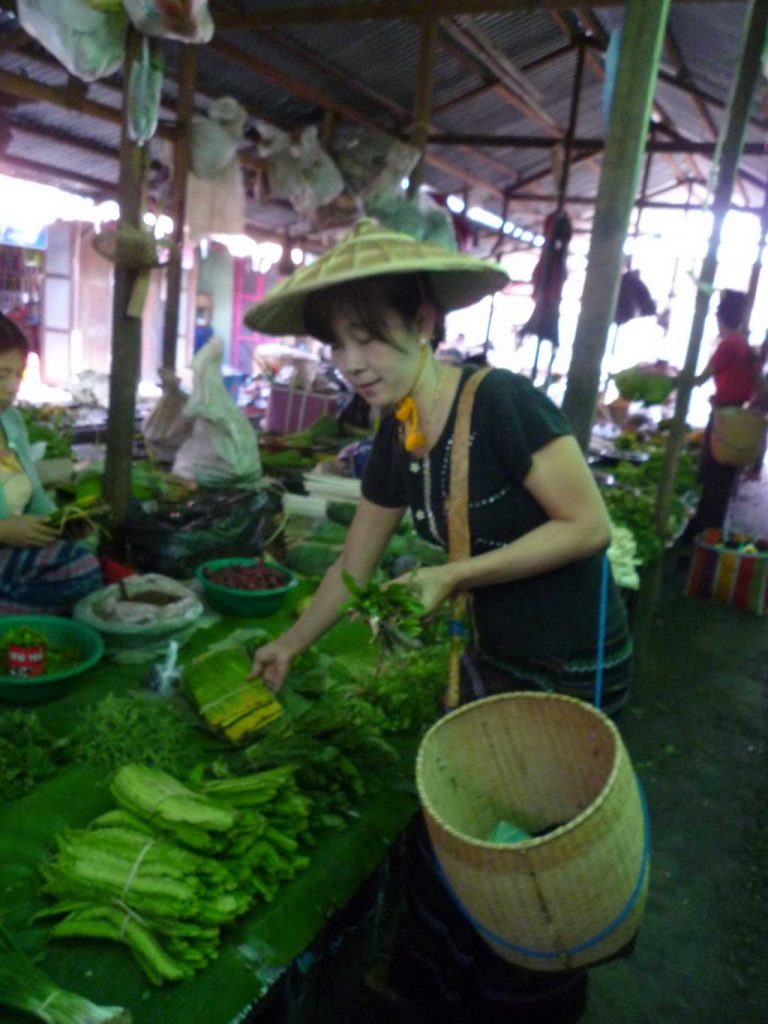
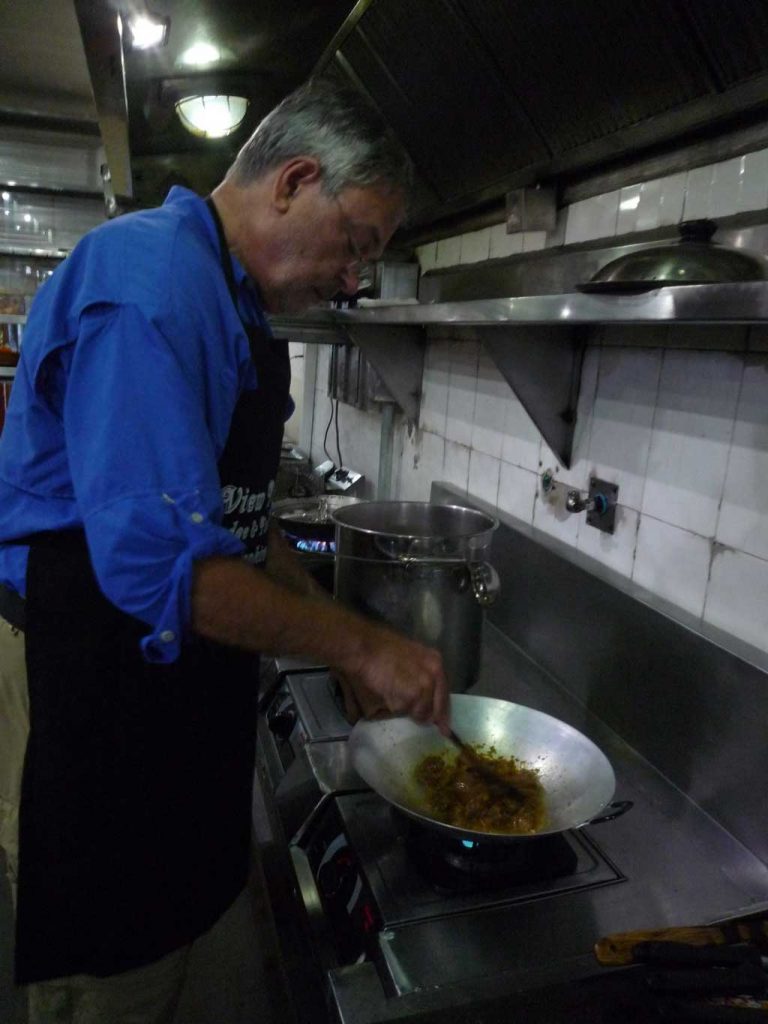
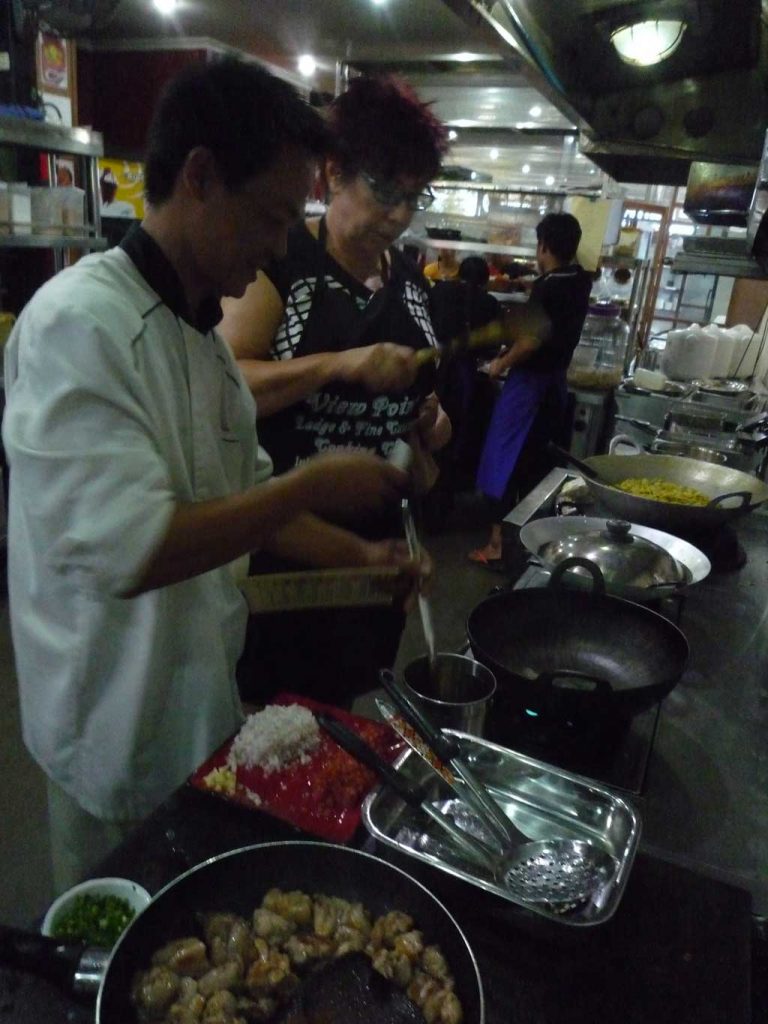
On Friday, December 2 we leave for Rangoon.

We’re sad to leave. I now understand why Mary could get lost in Asia for two years.
Next: Yangon/Rangoon
